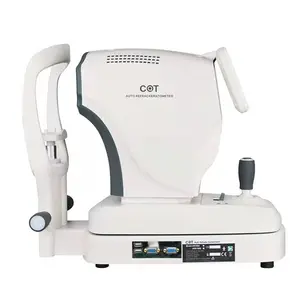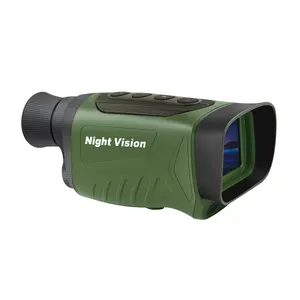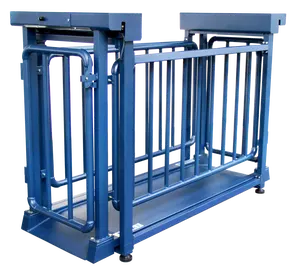Popular en tu industria






Equipo óptico Hina, medidor digital de lentímetro, JD-2600A 262600 A
EUR 467.69 - EUR 495.75
Pedido mínimo: 5 piezas






Instrumento de medición de goniómetro de ángulo de contacto, medidor de ángulo de contacto, probador de ángulo de contacto de energía antes de la pulverización de recubrimiento
EUR 3,636.69 - EUR 4,209.13
Pedido mínimo: 1 conjunto





Refractómetro automático de pantalla táctil de 7 ", equipo de Optometría de alta calidad de China, en promoción, 2017
EUR 1,122.44 - EUR 1,169.21
Pedido mínimo: 1 pieza







Probador de ángulo de contacto-Compre equipo de medición de ángulo de contacto, el mejor precio probador de ángulo de contacto para la venta producto en Beidou. CA80
EUR 3,636.69 - EUR 4,209.13
Pedido mínimo: 1 conjunto







Ptical-probador automático de ángulo de gota de agua, instrumento de medición de ángulo estático y dinámico de tensión superficial iquid
EUR 92.61 - EUR 3,366.36
Pedido mínimo: 1 conjunto







Función cefalométrica Instrumentos dentales digital CBCT 3D OPG máquina de escáner CT de rayos X
EUR 5,284.79 - EUR 18,321.86
Pedido mínimo: 1 conjunto






V-T020 360 grados transportador mejor calidad portátil plástico goniómetro
EUR 0.0936
Pedido mínimo: 5000 piezas






Probador de ángulo de contacto óptico, fabricante profesional, instrumento de prueba con el mejor precio
EUR 467.69 - EUR 5,507.41
Pedido mínimo: 1 conjunto


Regla de goniómetro de plástico transparente, 360 grados, base
EUR 1.13 - EUR 2.44
Pedido mínimo: 2003 piezas






Goniómetro de etapa lineal, goniómetro de cola de milano, plataforma Manual de ajuste fino, piezas móviles lineales, mesa deslizante de 60x60mm
EUR 76.70 - EUR 92.61
Pedido mínimo: 100 piezas


Mejor venta de productos de plástico personalizado gobernante goniómetro
EUR 1.03 - EUR 2.44
Pedido mínimo: 2000 piezas



Goniómetro digital profesional de plástico, medidor de ángulo, transportador, Escuela personalizada, precio de fábrica
EUR 0.2807 - EUR 1.13
Pedido mínimo: 1 pieza
Categorías principales
Sobre mejor goniómetro
Obtenga acceso a alta calidad, competente y profesional. mejor goniómetro en Alibaba.com para todo tipo de fines de medición, prueba y diagnóstico para sus ojos. Estos profundos. mejor goniómetro son equipos de alta precisión y están fabricados con materiales de calidad superior para mejorar el rendimiento y la durabilidad. Estos productos están equipados con las tecnologías más avanzadas para un rendimiento incomparable y son operados por un software confiable que brinda lecturas precisas. Compre estos maravillosos. mejor goniómetro de los principales proveedores y mayoristas del sitio a precios asequibles y descuentos.
Estos son de primera calidad. mejor goniómetro están hechos de materiales resistentes que los ayudan a durar mucho tiempo con mayor durabilidad y sostenibilidad a lo largo de los años. Estos productos son ecológicos y son ideales para laboratorios. El increíble. Los mejor goniómetro que se ofrecen en el sitio están equipados con sistemas de medición 2D y 3D y vienen en versiones manuales y automáticas. Estas. mejor goniómetro están equipados con lentes que son absolutamente potentes y pueden realizar todo tipo de pruebas ópticas.
Alibaba.com ofrece una calidad óptima. mejor goniómetro que están disponibles en distintos colores, formas, tamaños, funciones y otros aspectos según la selección de modelos. Estos productos son a prueba de golpes, fiables y energéticamente eficientes. La traducción armoniosa y flexible de estos. mejor goniómetro hace que las mediciones sean eficientes y precisas. Luego, los datos medidos se envían a diseños WORD, Excel o CAD. Estas. mejor goniómetro se puede colocar en accesorios móviles, electrodomésticos, conectores, accesorios para máquinas, accesorios de precisión, plástico, etc.
Explore la variada gama de. mejor goniómetro en Alibaba.com para comprar estos productos dentro de su presupuesto y requisitos. Estos productos están disponibles como pedidos OEM y ODM. Los servicios posventa se proporcionan con un mantenimiento de bajo costo.
Estos son de primera calidad. mejor goniómetro están hechos de materiales resistentes que los ayudan a durar mucho tiempo con mayor durabilidad y sostenibilidad a lo largo de los años. Estos productos son ecológicos y son ideales para laboratorios. El increíble. Los mejor goniómetro que se ofrecen en el sitio están equipados con sistemas de medición 2D y 3D y vienen en versiones manuales y automáticas. Estas. mejor goniómetro están equipados con lentes que son absolutamente potentes y pueden realizar todo tipo de pruebas ópticas.
Alibaba.com ofrece una calidad óptima. mejor goniómetro que están disponibles en distintos colores, formas, tamaños, funciones y otros aspectos según la selección de modelos. Estos productos son a prueba de golpes, fiables y energéticamente eficientes. La traducción armoniosa y flexible de estos. mejor goniómetro hace que las mediciones sean eficientes y precisas. Luego, los datos medidos se envían a diseños WORD, Excel o CAD. Estas. mejor goniómetro se puede colocar en accesorios móviles, electrodomésticos, conectores, accesorios para máquinas, accesorios de precisión, plástico, etc.
Explore la variada gama de. mejor goniómetro en Alibaba.com para comprar estos productos dentro de su presupuesto y requisitos. Estos productos están disponibles como pedidos OEM y ODM. Los servicios posventa se proporcionan con un mantenimiento de bajo costo.










